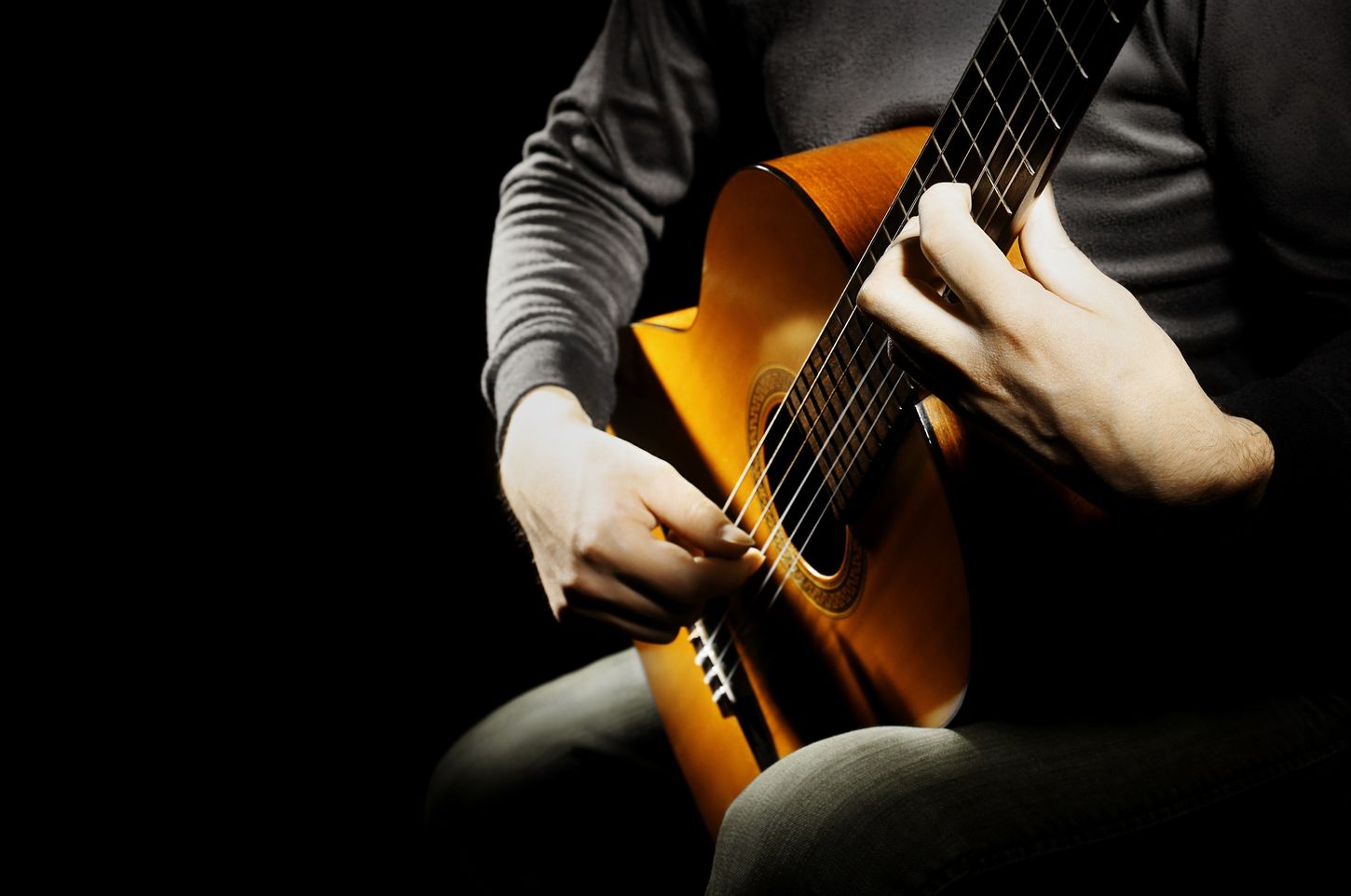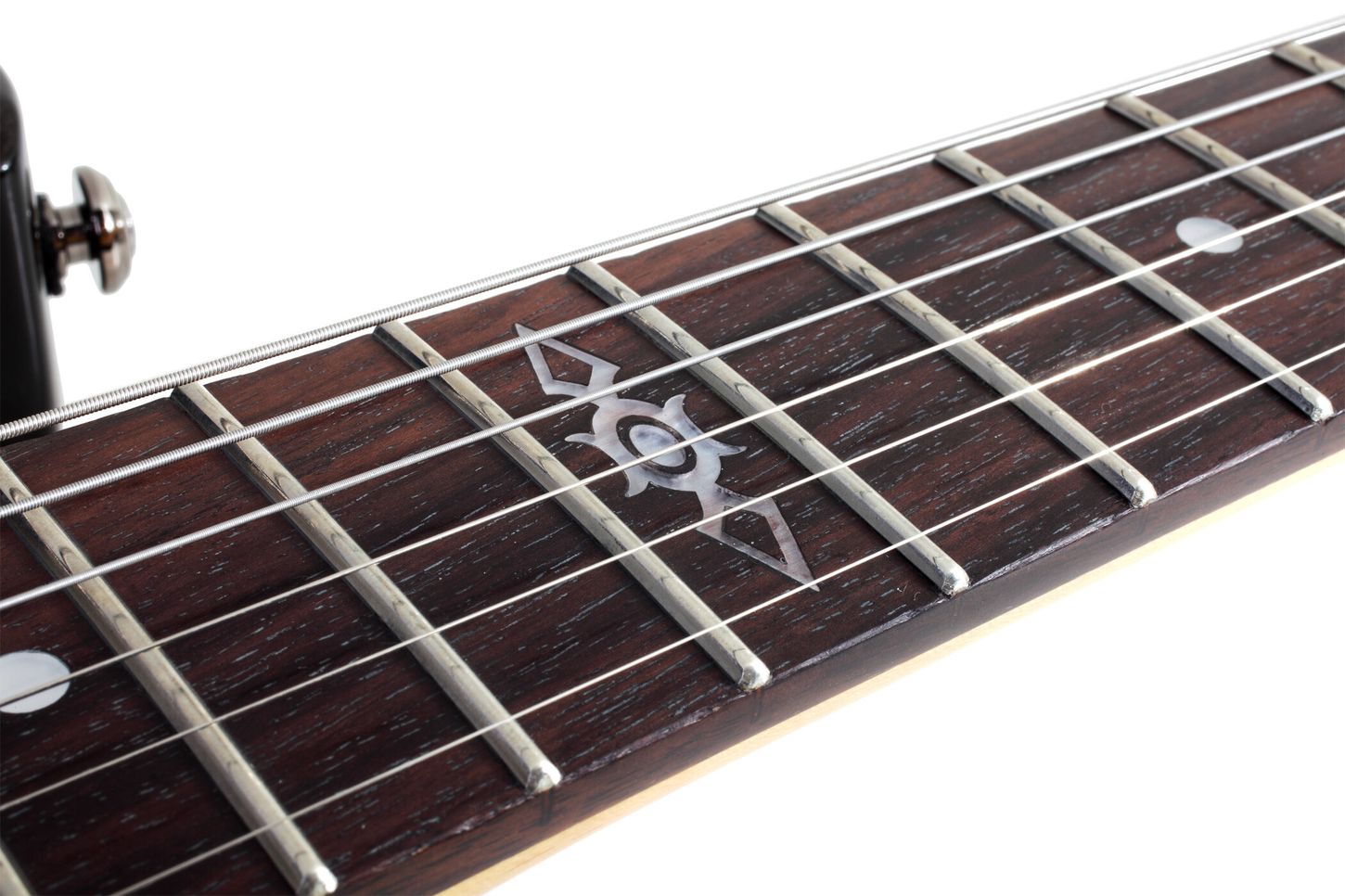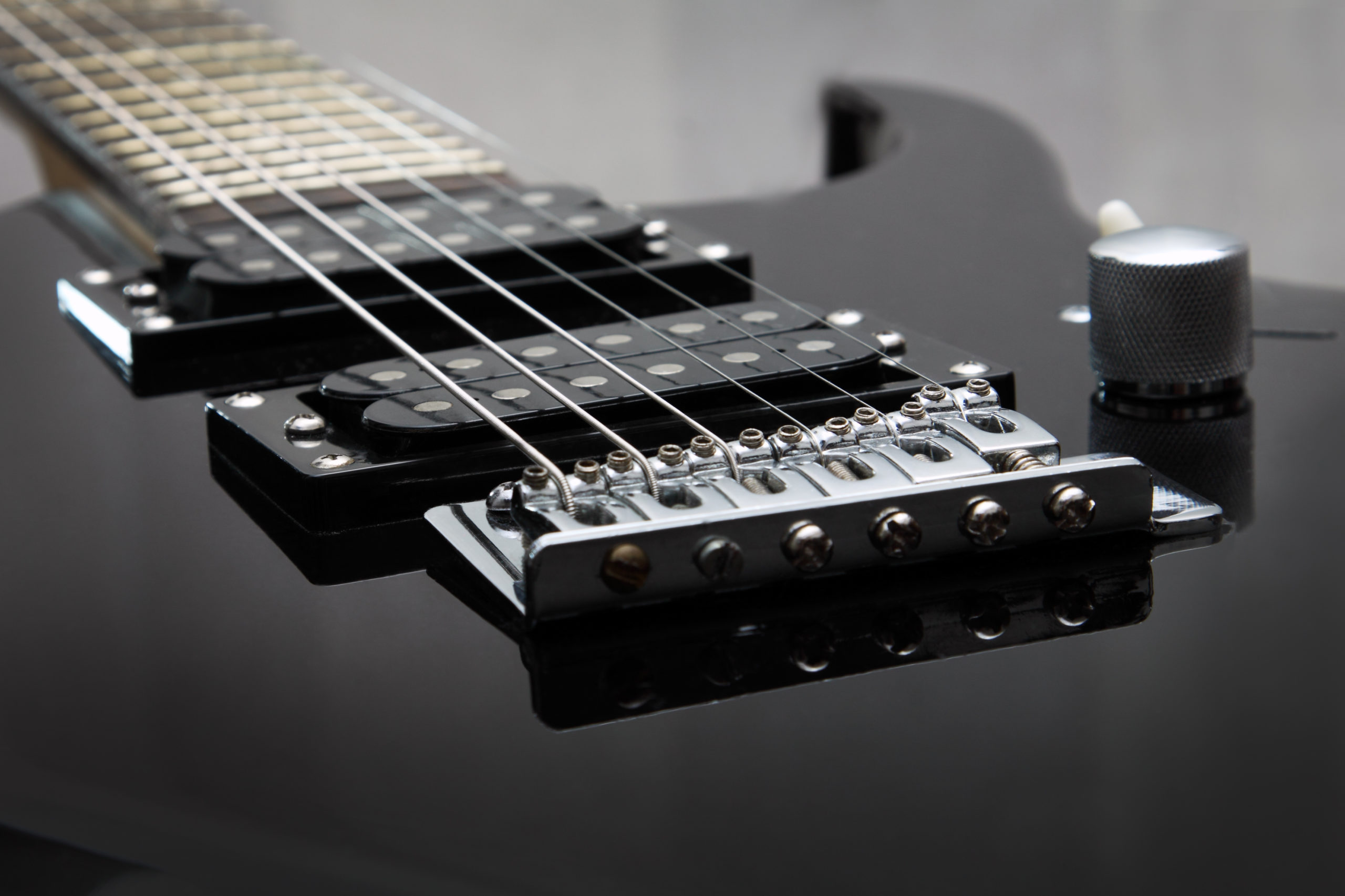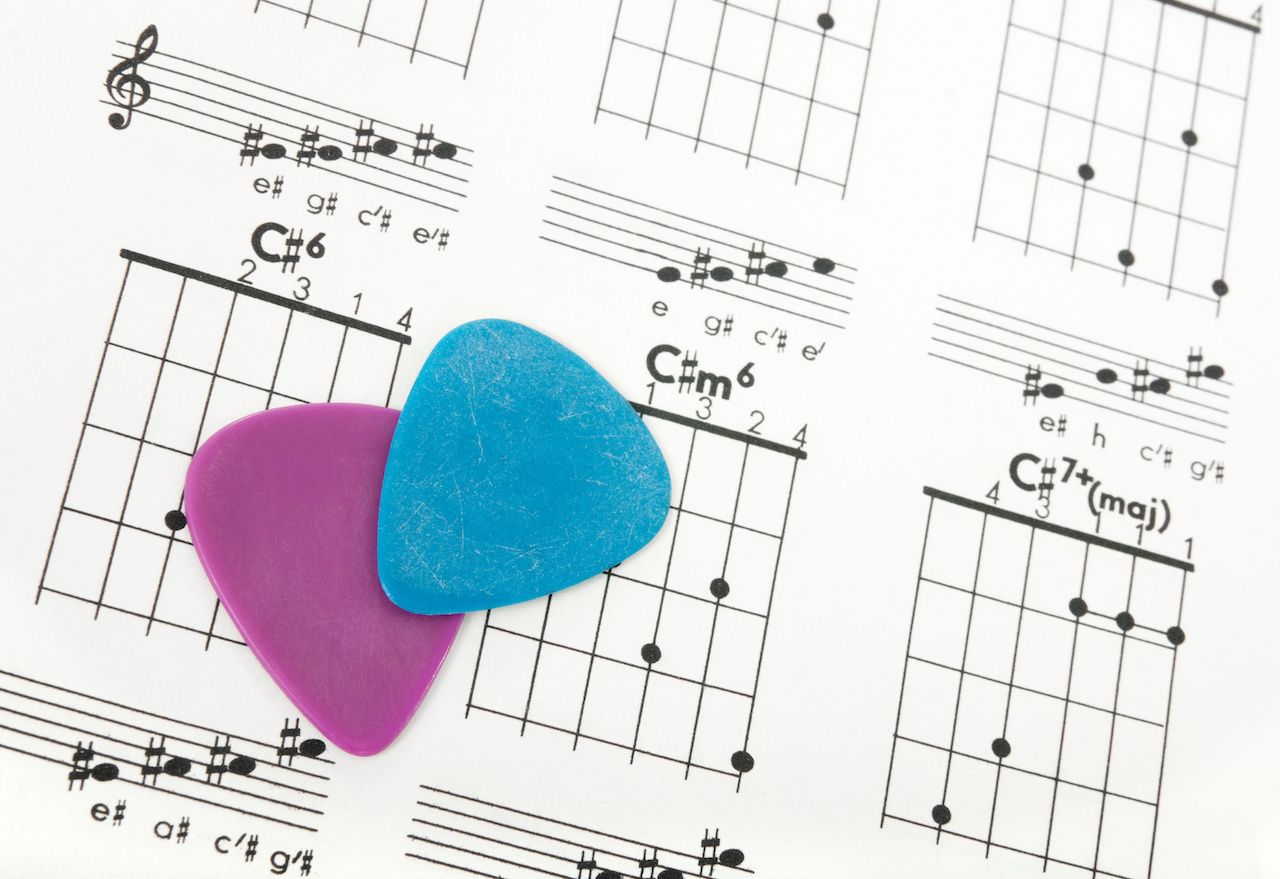Home>Instruments>Guitar>How Many Notes Are On A Guitar


Guitar
How Many Notes Are On A Guitar
Published: February 12, 2024
Discover how many notes are on a guitar and master the fretboard with our comprehensive guide. Learn all about guitar notes and scales today!
(Many of the links in this article redirect to a specific reviewed product. Your purchase of these products through affiliate links helps to generate commission for AudioLover.com, at no extra cost. Learn more)
Table of Contents
Introduction
Unveiling the Musical Universe of the Guitar
The guitar, a beloved and versatile instrument, has woven its melodic magic through the tapestry of musical history. Whether you are a seasoned strummer or a curious novice, understanding the fundamental aspects of the guitar can deepen your appreciation for its resonance and enrich your musical journey.
This article sets out to explore the intricacies of the guitar, delving into the number of notes it encompasses and the structure that underpins its harmonic potential. By unraveling the mysteries of the guitar's anatomy, tuning, and musical range, we aim to shed light on its melodic diversity and the boundless creativity it offers to musicians.
Join us as we embark on a captivating exploration of the guitar's musical landscape, uncovering the symphonic secrets hidden within its strings and frets. Whether you're a music enthusiast, a budding guitarist, or simply a curious soul with a penchant for musical knowledge, this article will illuminate the wondrous world of notes that resides within the heart of the guitar.
Anatomy of a Guitar
Exploring the Structural Symphony
Before we embark on our exploration of the guitar’s melodic realm, let’s first unravel the intricate anatomy of this beloved instrument. The guitar comprises several essential components, each contributing to its unique sound and playability.
The body of the guitar, often crafted from tonewoods such as spruce, mahogany, or cedar, forms the resonant chamber that amplifies the vibrations produced by the strings. This resonance is further enhanced by the soundhole, strategically positioned on the guitar’s face to project the instrument’s rich tonal nuances.
Mounted on the body, the neck extends toward the headstock, housing the tuning pegs that allow for precise adjustment of the strings’ tension. The fretboard, typically made of rosewood or ebony, provides a smooth surface for the fingers to press down on the strings, thereby altering the pitch of the notes.
Spanning the length of the fretboard, the frets are thin metal strips embedded into the wood, delineating the individual semitones that form the musical scale. The strings, usually crafted from steel or nylon, are anchored at the bridge and extend across the fretboard, where they can be plucked, strummed, or picked to produce a diverse array of musical expressions.
Understanding the interplay of these components is crucial to comprehending the guitar’s sonic capabilities. From the resonant body to the fretted neck and the taut strings, each element harmonizes to create the enchanting sounds that have enraptured music lovers for generations.
Standard Tuning
Unlocking Harmonic Equilibrium
Central to the guitar’s musical prowess is its tuning, a fundamental aspect that dictates the pitch and harmonic relationships between its strings. Standard tuning, the most prevalent tuning method for the six-string guitar, establishes a balanced configuration that enables players to access a wide range of musical possibilities.
In standard tuning, the six strings are typically tuned to the pitches E, A, D, G, B, and E, from the lowest string to the highest. This symmetrical arrangement facilitates chord formations, scale patterns, and melodic sequences, fostering a seamless transition between different musical contexts.
By adhering to standard tuning, guitarists can readily access familiar chord shapes and scale fingerings, streamlining the learning process and enabling effortless transposition between keys. This consistency not only enhances playability but also fosters a deeper understanding of music theory and fretboard navigation.
Moreover, standard tuning serves as a foundational framework for various playing styles and musical genres, from folk and rock to jazz and blues. Its ubiquity across diverse musical landscapes underscores its significance as a unifying standard that transcends stylistic boundaries.
Embracing standard tuning empowers guitarists to explore the instrument’s harmonic tapestry with confidence, fostering a harmonious relationship between creativity and technical proficiency. Whether strumming chords, picking melodies, or unleashing blistering solos, the inherent equilibrium of standard tuning lays the groundwork for musical innovation and expressive freedom.
As we unravel the guitar’s harmonic intricacies, standard tuning emerges as a cornerstone of its melodic identity, illuminating the path toward musical fluency and creative exploration.
Number of Notes on a Guitar
Unveiling the Melodic Spectrum
Exploring the sheer melodic diversity of the guitar unveils a captivating array of notes that form the building blocks of musical expression. With its six strings and multiple frets, the guitar offers a vast spectrum of playable notes, encompassing both natural tones and sharps/flats across multiple octaves.
Each string on a standard-tuned guitar can produce a range of notes, spanning multiple octaves. For instance, the open low E string resonates at the E2 pitch, while the highest E string at the 12th fret produces an E4 note. This expansive range allows guitarists to access a wide array of pitches, enabling the rendition of melodies, chords, and intricate harmonic sequences.
Considering the six strings collectively, the guitar encompasses an extensive tonal palette, spanning from the low E2 to the high E4, effectively spanning over two octaves. This broad sonic spectrum empowers guitarists to traverse the musical terrain with remarkable versatility, lending itself to diverse genres and musical expressions.
Furthermore, the fretboard’s layout facilitates the production of various notes within each octave, allowing for nuanced articulation and expressive phrasing. By combining fretted notes with open strings and employing techniques such as bends and slides, guitarists can imbue their performances with emotive depth and dynamic range.
It’s essential to acknowledge that the guitar’s melodic potential extends beyond the mere enumeration of notes. The instrument’s inherent versatility enables players to infuse each note with unique timbral qualities, leveraging techniques such as palm muting, harmonics, and fingerstyle articulation to evoke a rich tapestry of tonal textures.
As we unravel the guitar’s melodic tapestry, it becomes evident that its potential transcends the quantification of individual notes, encapsulating a boundless realm of musical expression and emotive resonance.
Octaves on a Guitar
Exploring Harmonic Doubling
Delving into the melodic intricacies of the guitar unveils the concept of octaves, a fundamental element that underpins the instrument’s harmonic richness. An octave represents a doubling or halving of a musical frequency, resulting in a harmonic relationship that imparts musical depth and resonance.
On the guitar, octaves manifest through the replication of a note at a higher or lower pitch within a specific harmonic range. For instance, playing the open low E string and then fretting the same string at the 12th fret produces an E note one octave higher. This harmonic doubling occurs consistently across all strings and frets, providing guitarists with a versatile toolkit for melodic exploration.
By leveraging octaves, guitarists can infuse their playing with sonic embellishments, enriching melodies and chord progressions with vibrant tonal variations. The strategic use of octave displacement can imbue compositions with a sense of depth and grandeur, elevating musical passages to new expressive heights.
Moreover, octaves serve as a foundational principle in the realm of guitar soloing and improvisation, enabling players to traverse the fretboard with fluidity and melodic ingenuity. The seamless transition between octaves empowers guitarists to craft captivating solos and dynamic melodic sequences, harnessing the instrument’s harmonic doubling to craft compelling musical narratives.
Understanding the concept of octaves on the guitar not only facilitates fretboard navigation but also fosters a deeper appreciation of the instrument’s harmonic resonance. By embracing the harmonic doubling inherent in octaves, guitarists unlock a world of melodic possibilities, enriching their musical expressions with captivating tonal depth and emotive allure.
Conclusion
Harmonic Reverberations and Melodic Exploration
Embarking on this melodic odyssey through the realm of the guitar has unveiled a tapestry of harmonic richness and expressive potential. From the intricate anatomy of the instrument to the harmonic doubling encapsulated within octaves, the guitar stands as a boundless source of musical creativity and emotive resonance.
By unraveling the guitar’s anatomy, we have gained insight into the structural symphony that underpins its melodic allure. The resonant body, fretted neck, and taut strings harmonize to create an instrument of unparalleled sonic versatility, inviting musicians to explore a myriad of musical expressions.
Delving into standard tuning has illuminated the balanced equilibrium that underlies the guitar’s harmonic framework. Standard tuning serves as a unifying standard, fostering musical fluency and creative exploration across diverse genres and playing styles.
Exploring the sheer number of notes on a guitar has revealed a vast melodic spectrum that empowers musicians to traverse the musical terrain with remarkable versatility. The guitar’s expansive tonal palette and nuanced articulation capabilities provide a canvas for boundless creativity and emotive expression.
Unveiling the concept of octaves has shed light on the harmonic doubling that infuses the guitar with depth and resonance. By harnessing the power of octaves, guitarists can imbue their compositions with vibrant tonal variations, elevating their musical narratives to new expressive heights.
As we conclude this exploration of the guitar’s melodic universe, it becomes evident that the instrument transcends its physical form, resonating as a conduit for artistic expression and emotional storytelling. Whether strumming gentle chords, unleashing blistering solos, or crafting intricate melodies, the guitar stands as a timeless companion on the musical journey, inviting players to weave their narratives through harmonic reverberations and melodic exploration.











